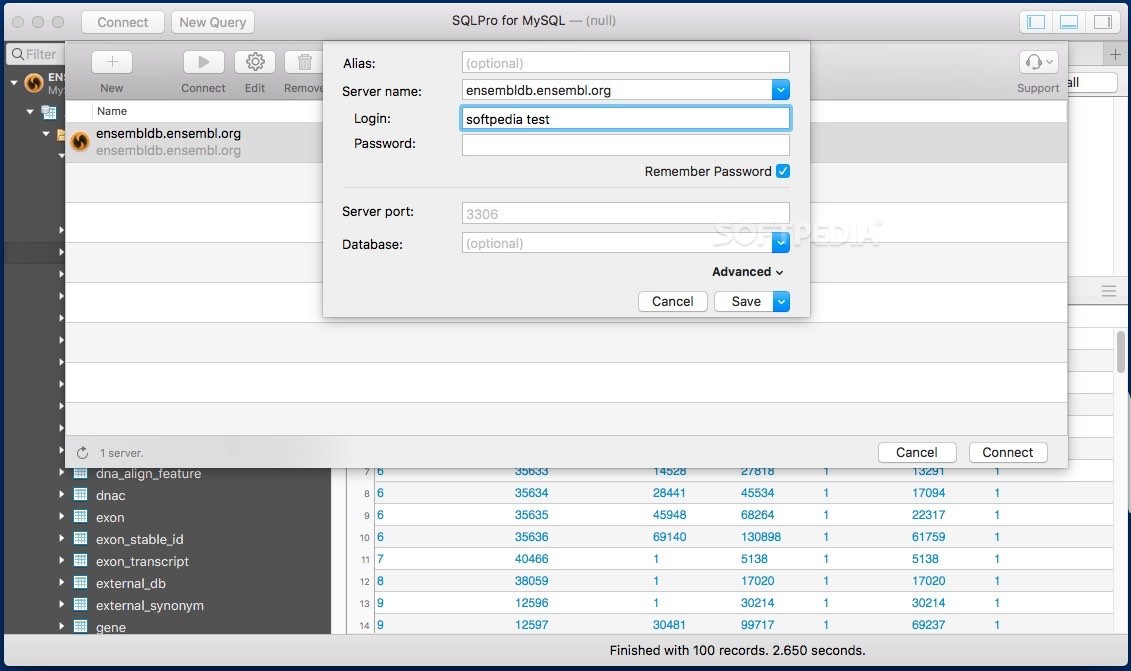Our popular MySQL Installer for OS X 10.8 Mountain Lion has been upgraded to support OS X 10.9 Mavericks. The installer script is a part of our Mac-Scripts Github repository. More information about the scripts can be found at code.macminivault.com. The Mac OS X Mountain Lion 10.8 ISO stands thirteenth in the Mac OS arrangement. Mac OS X Mountain Lion 10.8 ISO propelled in mid-2016 made an uncommon passage into the market after the OS X. Mac OS X Mountain Lion 10.8 ISO made a progressive move from the ongoing patterns in the Mac OS history. Please report any bugs or inconsistencies you observe to our Bugs Database. Thank you for your support!
Apache and PHP come packaged with OS X. To create a local web server, all you need to do is configure Apache and install MySQL.
Enable Apache on Mac OS X
To check what version of apache you have currently installed on your mac just open you terminal and type httpd -v
Verify if apache is running by accessing http://localhost:
If you get “This site can’t be reached”, you need to start apache, just type,sudo apachectl start and press enter:
Verify localhost again:
if you see “It works!” apache is running.
Apache Commands
You can start, stop, and restart your server by typing:
Setting up root directory
Apache’s default directory is /Library/WebServer/Documents that is where `It work’s!` file is located at.
Move into apache users folder:
Type ls and check if you have a config file named after your yourusername.conf username, if you can’t find one, that’s ok, then just type sudo nano yourusername.conf
Add this configuration to your file:
Press “Ctrl + x” to exit, “y” to save changes and hit enter.
Then to give apache permissions to read we type sudo chmod 644 YourUserName.conf and press enter, lastly we type sudo apachectl restart
Done!
Mac OSX 10.8 comes with PHP 5.2 by default, in order to check what version you currently have just type php -v.
Whatever is the current version of your PHP, go ahead and update it here.
Enable PHP
cd into Documents:
cd into apache directory:
then edit your config file:

then search “PHP” by using ctrl + w” :
Uncomment the following line (remove #):
Now apache can serve PHP.
Configure PHP .ini
cd into /usr/local/php5/php.d
The configuration file (php.ini) is read when PHP starts up. For the server module versions of PHP, this happens only once when the web server is started. For the CGI and CLI versions, it happens on every invocation.
Here you can configure your time zone and other settings, just type:
Done!.
Download it from here
You don’t have to log in, just click “No thanks, just start my download”.
Run the installer.
Finish installation and set it up to be running on startup by going into your system preferences bottom line and clicking on MySQL icon, you will get a default password, save it, you will need it later.
Configure MySQL
Add MySQL to PATH
The path is a list of directories that Unix uses in order to locate programs on the machine that it can run.
If you type which php in your terminal you will get back its location:
Up until this point, MySQL has not yet been added to the path, we have to add the directory where MySQL resides to that list.
You can take a look at that list by typing:
MySQL is located at:
Now we need to add this path to PATH, just type:
We need to add this to .bash_profile:
Ctrl + x to exit then press “y” to save changes and enter to confirm file name.
Set root password
To set a new password:
If you already have a password and you want to change it, then type:
All ready!
Request–response, or request–reply, is one of the basic methods computers use to communicate with each other.
Mysql Download Mac Os
The browser sends a request for some data and apache responds to the request. Usually, there is a series of such interchanges until the complete response is sent.
This image illustrates how it works.
You can check if everything works by creating a .php file inside your /Sites directory, launch your browser and type in the address bar http://localhost/~yourusername/filename.php
Now your development environment is ready. Enjoy!
Adrian Prieto
Mac Os X 10.10 Update
Latest posts by Adrian Prieto (see all)
Mysql Download Mac Os X
- How To Set Up Your WordPress Development Environment with a Large Database ft. MAMP & MAC, The Really Easy Guide - April 24, 2020
- Next.js ▲ + Typescript + Storybook The Really Simple Guide 2019 - November 25, 2019
- Next.js + Styled Components The Really Simple Guide ▲ + 💅 - June 26, 2018
